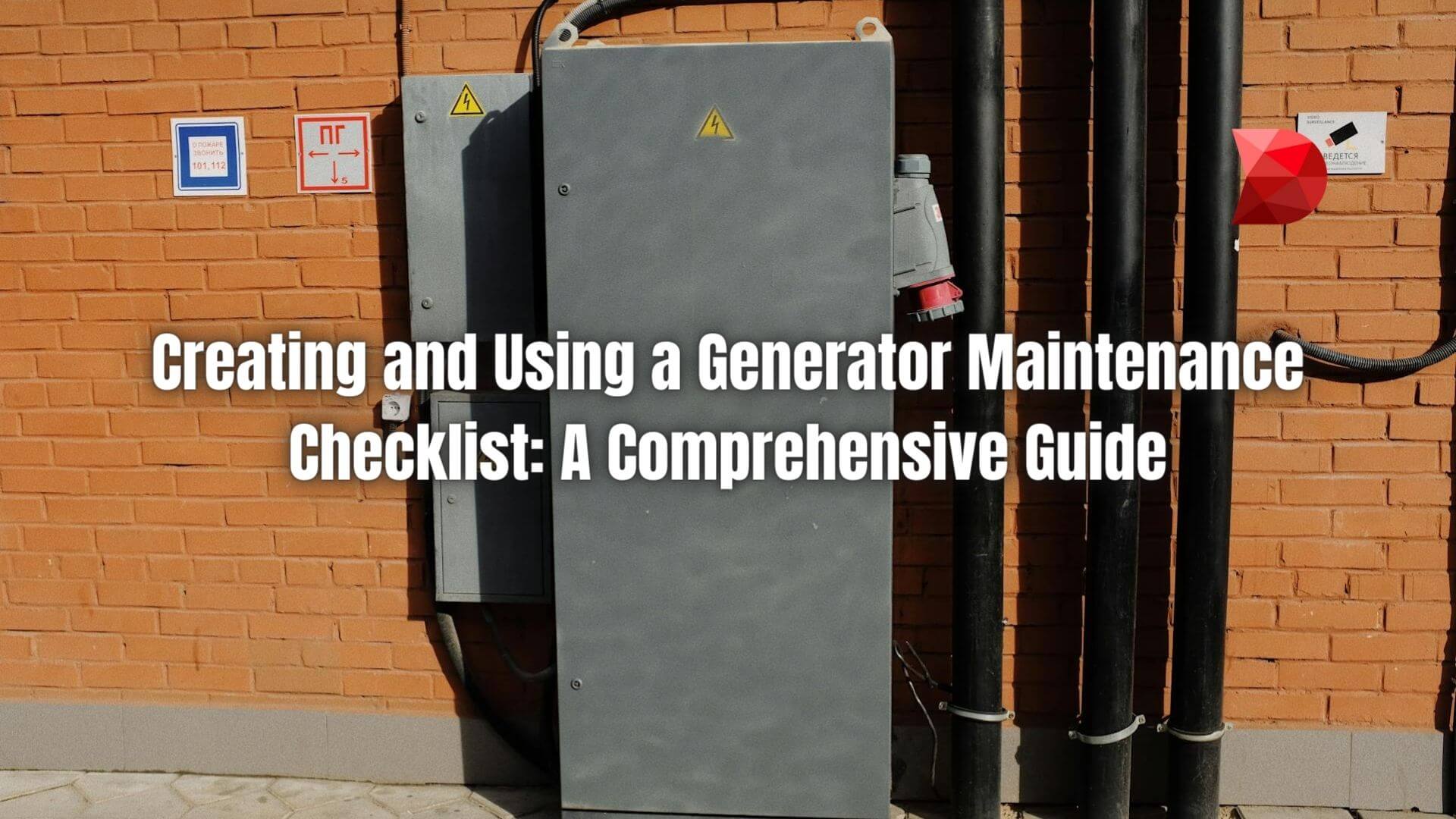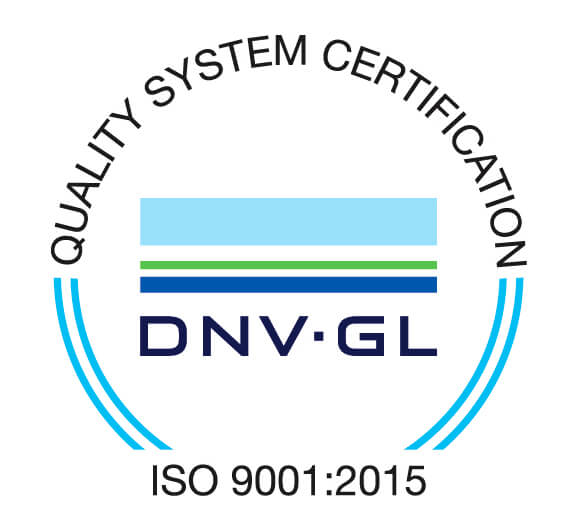Our increasing reliance on electricity makes generators a vital tool for homes and businesses alike. They provide essential backup power during outages, ensuring the continued operation of critical appliances, lighting, and even life-saving medical equipment. However, neglecting proper generator maintenance can have serious consequences.
A lack of care can lead to unexpected outages due to preventable issues, a significantly shortened lifespan for the generator itself, and even potential safety hazards. This guide will equip you with the knowledge and tools to create and utilize a generator maintenance checklist, promoting reliable power and generator longevity.
Table of Contents
ToggleWhat is Generator Maintenance?
Generator maintenance is the practice of regularly inspecting, servicing, and testing your generator to ensure it operates at peak performance and remains ready to deliver reliable backup power whenever needed. It’s a proactive approach that encompasses a range of tasks, from simple visual inspections to periodic fluid changes and operational testing.
If your business depends on generator power, generator maintenance should not be taken lightly. You can potentially face generator failures and costly repairs without proper generator maintenance. By conducting regular generator inspections and following a generator maintenance checklist, you can keep your generator in peak condition and ensure it will be ready when you need it most.
Why Perform Generator Maintenance Inspections?
Regular generator maintenance inspections are crucial not only for optimal performance and equipment longevity but also for compliance with safety regulations and ensuring critical operations remain functional during emergencies. Here’s a breakdown of why these inspections are essential:
- NFPA Compliance: The National Fire Protection Association (NFPA) Standard 110, “Standard for Emergency and Standby Power Systems,” sets guidelines for businesses to maintain reliable backup power sources. Regularly scheduled maintenance inspections ensure your generator meets these standards and can provide the necessary power when the primary grid fails.
- Mitigating Risks: Unplanned power outages can have vastly different consequences depending on the establishment. A retail store might experience minor inconvenience, while a hospital could face critical situations jeopardizing patient lives. Generator failure due to lack of maintenance can exacerbate these situations. Inspections identify potential issues before they escalate, preventing downtime and ensuring critical equipment like respirators and life support systems continue operating.
- Safety First: Neglected generators pose potential safety hazards. Fuel leaks, faulty wiring, and overheating can all lead to fires and electrical hazards. Inspections help detect these issues early on, preventing accidents and protecting your property, employees, and customers.
- Peace of Mind: Knowing your generator is in top condition through regular inspections provides peace of mind. You can be confident that your backup power will function as intended during an outage, minimizing disruption and ensuring a smooth transition to backup power.
By prioritizing regular maintenance inspections, you comply with safety regulations, mitigate risks associated with power outages, and prioritize the safety of your staff and customers.
What is a Generator Maintenance Checklist?
A generator maintenance checklist is a customized document that acts as your roadmap for ensuring the ongoing health and reliability of your generator. It outlines a series of inspections, service tasks, and tests to be performed at specific intervals, promoting a proactive approach to generator care. This checklist serves as a vital tool for:
- Maintaining Consistency: By having a structured plan, you guarantee all crucial checks are performed regularly, preventing tasks from being overlooked or forgotten.
- Promoting Efficiency: The checklist streamlines the maintenance process, ensuring a clear and efficient inspection routine.
- Record Keeping: It provides a platform to document completed tasks, observations made during inspections, and any corrective actions taken. This record serves as a valuable reference point for future maintenance needs and helps track the overall health of your generator.
Using a generator maintenance checklist ensures that all generator components are inspected and serviced regularly and keeps your generator running like new. At the same time, you can also identify generator issues early and prevent generator failures.
What to Include in a Generator Maintenance Checklist?
An effective generator maintenance checklist is a customized plan outlining the specific tasks needed to keep your generator running smoothly. Here’s a breakdown of the key sections you should include, along with some examples for each:
Physical and Visual Checks
These visual checks provide a basic overview of the generator’s overall condition and identify any potential issues before they escalate. Some notable examples include the following:
- Enclosure: Inspect the generator’s enclosure for any signs of damage, rust, or dents. Ensure there are no obstructions around the unit that could impede ventilation.
- Debris: Clear any leaves, branches, or other debris that may have accumulated around the generator, preventing proper airflow and potential fire hazards.
- Fluid Levels: Visually check the engine oil, coolant, and fuel levels for adequacy. Refer to your owner’s manual for proper fill levels and recommended fluids.
- Belts and Hoses: Look for any cracks, fraying, or loose connections on the generator’s belts and hoses. Ensure they are properly tensioned and free of damage.
- Leaks: Inspect the generator for any signs of leaks from the engine oil, coolant, fuel system, or exhaust. Address any leaks promptly to prevent environmental damage and potential safety hazards.
Leakage Checks
Leakage checks are essential for preventing environmental damage, ensuring safe operation, and maintaining optimal performance. Notable examples include the following:
- Engine Oil: Look for oil leaks around the engine crankcase, oil filter, and drain plug. A clean and dry engine block indicates proper oil containment.
- Coolant: Check the radiator and hoses for leaks or signs of coolant weeping. Inspect the coolant reservoir for proper level and coolant condition (refer to owner’s manual).
- Fuel System: Visually inspect the fuel lines and connections for leaks or signs of fuel deterioration. Ensure there is no fuel around the carburetor or fuel injection system.
- Exhaust System: Examine the exhaust pipes and muffler for cracks, holes, or leaks. A properly functioning exhaust system is crucial for safe operation and proper engine performance.
- DC Electrical System: Check the battery cables and terminals for corrosion, cracks, or loose connections. Ensure no exposed wiring exists that could cause electrical shorts.
Oil and Lubrication Services
Oil and lubrication services are vital for maintaining peak engine performance and extending the lifespan of your generator. Notable examples include the following:
- Engine Oil Change: Change the oil at the recommended intervals specified in your owner’s manual. This will remove contaminants and ensure proper engine lubrication.
- Oil Filter Replacement: Change the oil filter concurrently with the oil change. A clogged filter reduces oil flow and can harm the engine.
- Air Filter Cleaning/Replacement: Clean or replace the air filter regularly according to the manufacturer’s instructions. A clean air filter ensures proper air intake for optimal combustion.
- Grease Points: Lubricate the generator’s grease points as specified in the owner’s manual. This reduces friction and wear on critical components.
Battery Testing
Regular battery testing ensures your generator can start reliably when needed during a power outage. Notable examples include the following:
- Battery Electrolyte Level: Check the electrolyte level in the battery cells (refer to the owner’s manual for the proper level). Low electrolyte levels can damage the battery.
- Battery Terminal Connections: Inspect the battery terminals for corrosion or loose connections. Clean and tighten connections as needed to ensure proper electrical flow.
- Battery Load Test: Periodically perform a load test (consult owner’s manual or a qualified technician) to assess battery health and cranking capacity.
Overall Condition Assessment
- After completing the checklist, take a moment to assess the generator’s overall condition. Are there any unusual noises or vibrations? Does the generator start and run smoothly?
- Noting these observations can help identify potential issues requiring further attention from a qualified technician.
Signature, Date, and Time of Inspection
- Record the inspector’s name, date, and time of the completed maintenance. This helps track maintenance history and identifies when the next inspection is due.
Generator Maintenance Best Practices
A well-maintained generator is essential for ensuring reliable backup power during outages. Following these best practices alongside your comprehensive checklist will maximize your generator’s performance and lifespan:
Run the Generator Every 3 to 6 Months
Even if you haven’t experienced a power outage, it’s crucial to run your generator periodically. Ideally, run it under load for 30-60 minutes every 3 to 6 months. This lubricates the internal components, removes moisture buildup that can cause corrosion, and keeps the engine running smoothly. Consult your owner’s manual for specific recommendations on load and runtime for your generator model.
Check for Signs of Damage
Regularly inspect your generator for any signs of damage that could affect its performance or safety. Look for cracks in the housing, loose bolts or connections, and any signs of rust or corrosion. Pay close attention to the condition of the belts and hoses, checking for cracks, fraying, or loose connections. Addressing any minor damage promptly helps prevent more serious issues down the line.
Clean the Generator Regularly
A clean generator operates more efficiently and is less prone to problems. Regularly remove any leaves, branches, or debris that may have accumulated around the unit. This ensures proper ventilation and prevents overheating. Clean the air intake vents according to the manufacturer’s instructions to ensure a clean air supply for optimal combustion. Avoid using pressurized water to clean the generator, as this can force water into sensitive electrical components.
Store Fuel Properly
Generator performance relies heavily on the quality of the fuel you use. Always use fresh, clean fuel that meets the specifications outlined in your owner’s manual. Avoid using old or contaminated fuel, as this can clog filters, cause engine damage, and lead to difficult starts. If you plan to store your generator for extended periods, it’s recommended to add a fuel stabilizer to prevent fuel degradation.
Invest in Professional Maintenance
While most homeowners can perform routine maintenance checks, scheduling annual professional maintenance is highly recommended. A qualified technician can perform a more comprehensive inspection, including testing the voltage output, evaluating the generator’s overall health, and identifying any potential issues that may not be readily apparent during a visual inspection. This professional service ensures your generator is operating safely and efficiently, maximizing its lifespan and preparedness for when you need it most.
How to Create a Generator Maintenance Checklist?
Creating a generator maintenance checklist is easy as long as you have all the items you need to include in your list. With that said, follow the tips below to create your generator maintenance checklist:
- List generator tasks and components: List all tasks and components that should be inspected and serviced during generator maintenance.
- Identify generator issues: Next, identify generator issues that should be checked and serviced. These may include generator voltage output, wiring, fuel system, and coolant system.
- Establish generator maintenance schedule: Finally, establish a generator maintenance schedule and ensure generator components are inspected and serviced regularly according to the generator maintenance checklist.
- Be prepared: Keep generator components and tools in your generator maintenance toolkit so you’re ready when it comes time to service the generator.
- Use a common code platform: To make generator maintenance easier, use a low code platform to create a generator maintenance checklist.
Frequently Asked Questions (FAQs)
Q1: How often should I use my generator maintenance checklist?
The frequency of using your checklist depends on two factors:
- Scheduled Maintenance: Your checklist should include tasks with varying frequencies. Daily or weekly checks might involve visual inspections and fluid level monitoring. Monthly or quarterly tasks could include battery testing and air filter cleaning. Finally, some maintenance, like oil changes, might be yearly based on your generator’s usage and manufacturer recommendations.
- Actual Usage: If you run your generator frequently (weekly or monthly for testing purposes), you may need to adjust the checklist schedule for certain tasks. For example, checking engine oil levels might become more frequent.
Q2: Can I create a generic checklist for all generators?
While some core maintenance tasks are universal for generators, it’s important to customize your checklist based on your specific generator model. Manufacturer recommendations for oil types, filter replacements, and even running procedures can vary. Always refer to your owner’s manual for specific details and incorporate them into your checklist.
Q3: Are there any safety precautions I should take while performing maintenance?
- Always allow the generator to cool completely before performing any maintenance tasks.
- Never attempt maintenance on a wet generator or while it’s running.
- Disconnect the battery before working on electrical components.
- Wear appropriate safety gear, such as gloves and eye protection, when handling fluids or inspecting the engine.
- If you’re unsure about any task, consult your owner’s manual or a qualified technician.
Q4: My checklist mentions “load testing” the battery. How do I do this?
A battery load test is typically performed with a specialized battery tester. These testers can be found at most automotive stores or online. They simulate the high current draw that occurs when starting the generator and provide a reading of the battery’s health and cranking capacity. Consult your owner’s manual or a technician for specific instructions on using a load tester with your generator model.
Q5: What should I do if I discover a major issue during my maintenance check?
If you identify a significant problem during your inspection, such as a large oil leak, extensive damage to the housing, or the generator failing to start, stop using the generator immediately. Consult your owner’s manual for troubleshooting tips, or contact a qualified technician for repairs. Forcing a malfunctioning generator to run can lead to further damage and potential safety hazards.
Q6: Is there a digital format available for generator maintenance checklists?
There are several options for digital checklists. Some generator manufacturers offer downloadable or app-based versions specific to their models. There are also general maintenance checklist templates available online that can be customized for your generator. You can find these with a quick web search using terms like “generator maintenance checklist template.”
Conclusion
By following the steps outlined in this comprehensive guide, you’ve taken a significant step toward ensuring your generator’s reliability and longevity. A well-maintained generator provides peace of mind, knowing you have a dependable source of backup power in case of outages.
A generator maintenance checklist is your roadmap to success. Utilize it regularly, prioritize recommended maintenance tasks, and don’t hesitate to seek professional assistance when needed. With a proactive approach, your generator will be ready to deliver when you need it most, keeping your lights on, your appliances functioning, and your critical operations running smoothly.
Streamline Generator Maintenance Inspections with DATAMYTE
DATAMYTE is a quality management platform with low-code capabilities. Our Digital Clipboard, in particular, is low-code workflow automation software that features a workflow, checklist, and smart form builder. This tool lets you easily create, customize, and manage digital generator maintenance checklists.
DATAMYTE also lets you conduct layered process audits (LPA), a high-frequency evaluation of critical process steps, focusing on areas with the highest failure risk or non-compliance. Conducting LPA with DATAMYTE lets you effectively identify and correct potential defects before they become major quality issues.
With DATAMYTE, you have an all-in-one solution for streamlining generator maintenance inspections, ensuring data accuracy, and fostering a proactive approach to generator care. Book a demo now to learn more about how DATAMYTE can revolutionize your generator maintenance process.



